Jacobo Bielak
Knowledge transfer between bridges for drive-by monitoring using adversarial and multi-task learning
Jun 05, 2020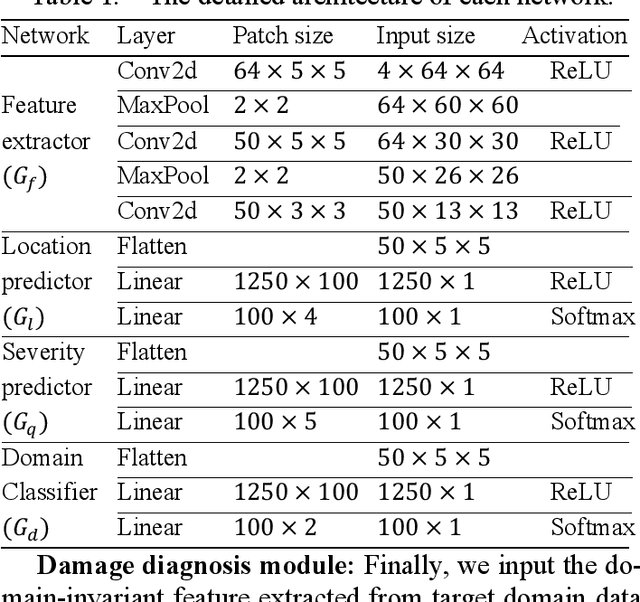

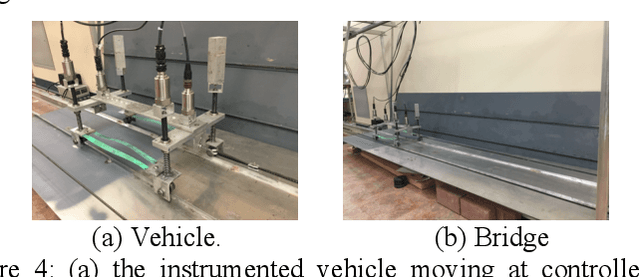
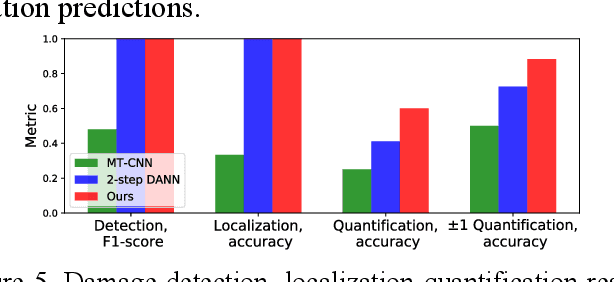
Abstract:Monitoring bridge health using the vibrations of drive-by vehicles has various benefits, such as low cost and no need for direct installation or on-site maintenance of equipment on the bridge. However, many such approaches require labeled data from every bridge, which is expensive and time-consuming, if not impossible, to obtain. This is further exacerbated by having multiple diagnostic tasks, such as damage quantification and localization. One way to address this issue is to directly apply the supervised model trained for one bridge to other bridges, although this may significantly reduce the accuracy because of distribution mismatch between different bridges'data. To alleviate these problems, we introduce a transfer learning framework using domain-adversarial training and multi-task learning to detect, localize and quantify damage. Specifically, we train a deep network in an adversarial way to learn features that are 1) sensitive to damage and 2) invariant to different bridges. In addition, to improve the error propagation from one task to the next, our framework learns shared features for all the tasks using multi-task learning. We evaluate our framework using lab-scale experiments with two different bridges. On average, our framework achieves 94%, 97% and 84% accuracy for damage detection, localization and quantification, respectively. within one damage severity level.
Damage-sensitive and domain-invariant feature extraction for vehicle-vibration-based bridge health monitoring
Feb 06, 2020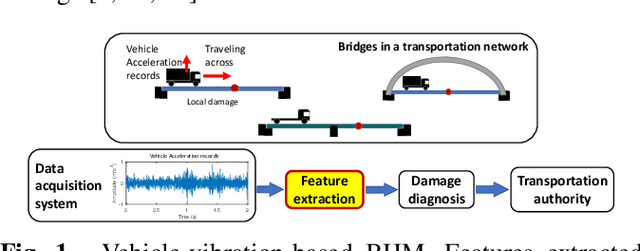
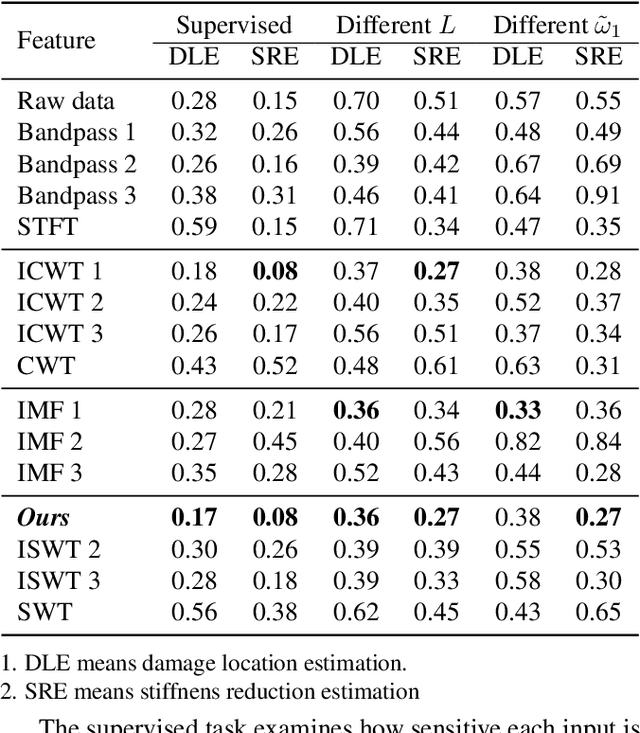
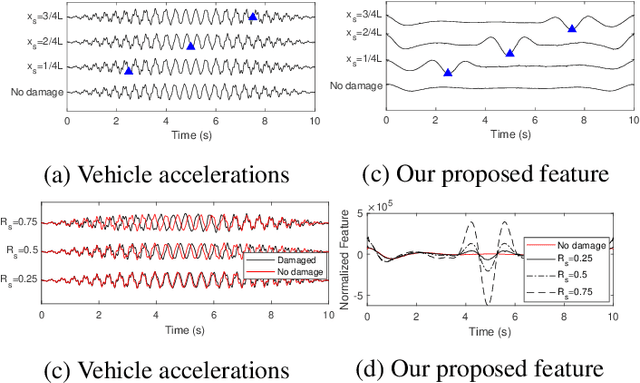

Abstract:We introduce a physics-guided signal processing approach to extract a damage-sensitive and domain-invariant (DS & DI) feature from acceleration response data of a vehicle traveling over a bridge to assess bridge health. Motivated by indirect sensing methods' benefits, such as low-cost and low-maintenance, vehicle-vibration-based bridge health monitoring has been studied to efficiently monitor bridges in real-time. Yet applying this approach is challenging because 1) physics-based features extracted manually are generally not damage-sensitive, and 2) features from machine learning techniques are often not applicable to different bridges. Thus, we formulate a vehicle bridge interaction system model and find a physics-guided DS & DI feature, which can be extracted using the synchrosqueezed wavelet transform representing non-stationary signals as intrinsic-mode-type components. We validate the effectiveness of the proposed feature with simulated experiments. Compared to conventional time- and frequency-domain features, our feature provides the best damage quantification and localization results across different bridges in five of six experiments.
 Add to Chrome
Add to Chrome Add to Firefox
Add to Firefox Add to Edge
Add to Edge